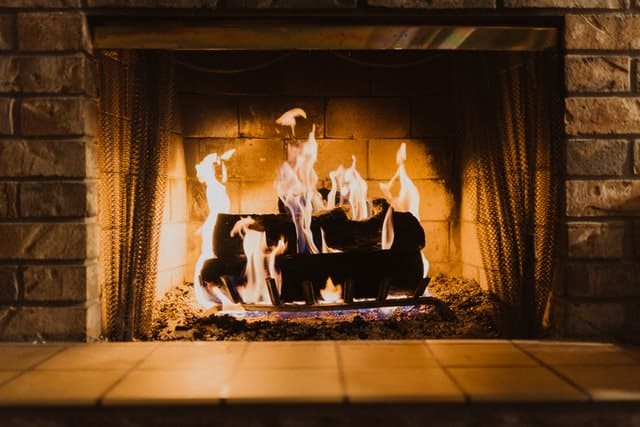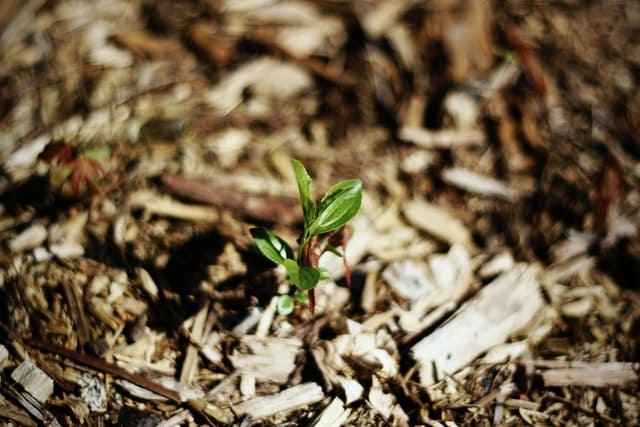How can you recycle, reuse or compost your Christmas tree in an ecological way? What are the good practices to learn from and the bad ones to avoid? Let’s take a closer look.
In recent years, the subject of the ecological impact of Christmas trees has been regularly in the spotlight.
Many questions arise: are Christmas trees really ecological? How to choose a greener Christmas tree? Is it better to have a natural Christmas tree, or a reusable artificial tree? Should Christmas trees be removed? When should trees and decorations be taken? What tree drop-off locations are near me?
Among these questions, one is particularly important for natural firs (a famous type of Christmas trees): how to get rid of them after the holiday season in the most ecological way possible?
This is a great question to ask! Why? Because this is the stage of the tree lifecycle where most of its environmental impact takes place. So what’s the best way to dispose of your Christmas tree in an ecological way? Let’s start off by understanding what no one should be doing and how it harms the environment!
Getting rid of your Christmas tree: what to avoid
You should know that Christmas trees are theoretically carbon sinks.
This means that as they grow, they capture the CO2 contained in the atmosphere to fix it in their trunks, branches, roots and spines. The problem is that depending on how you get rid of your Christmas tree, this CO2 can end up in the atmosphere again.
Disposing your Christmas tree by burning it: avoid doing it!

When you burn your fir tree, all the CO2 captured is released into the air, where it can again contribute to global warming.
In theory, this is not very serious, because if you renew your tree every year, the released CO2 will be captured again in the following years by the next Christmas trees that will be grown. This is the principle of biomass, which is considered roughly “carbon neutral”.
It is, therefore, obviously possible to burn your tree at home if you have a wood-heating system (fireplace, wood stove). But this is rarely an ideal option from an ecology perspective.
Indeed, burning a fir tree means emitting pollutants such as fine particles. And then, even if we consider this tree will be compensated by another one which will be grown meanwhile, we’re thinking only about the stored carbon.
But we know there are other greenhouse gas emissions related to the cultivation of trees: like their transport to a warehouse and to our homes… Not to mention the (indirect) impact from the Christmas gifts, the meals, the trips to meet our families…
Also, fir wood is rarely the ideal material for producing heat at home. So although it may seem like an easy option, let’s try not to increase our impact and instead keep the trees’ carbon away from the atmosphere?
Throw the Christmas tree at the garbage dump
Waste… is a human concept. There’s no such thing in nature where the “leftovers” from one kingdom are food for another. So this is a terrible idea to get disposed of your Christmas tree!
For many citizens, this might as well seem a simple and easy solution but again, not a very ecological one. Why?
Because in waste disposal facilities, unless properly composted, fir trees disintegrate and are exposed to bacteria that lead them to ferment. As a result, all the CO2 stored in fir trees is gradually found in the atmosphere as methane (CH4).
As with combustion, throwing your tree to waste is also… a waste: a waste of material that could be useful elsewhere. But where? And what is the good alternative then?
How to get rid of your tree in a really ecological way?
To prevent the CO2 captured by a fir tree during its growth from ending up in the atmosphere, you should make every effort to keep the plant material of the fir tree intact or to transform it so that this organic matter does not burn or ferment. Here’s what you can do:
Grind the Christmas tree to do mulch

The easiest option is to grind your tree to mulch it. Mulching is an agricultural technique that consists of spreading material (often plants) on cultivated soil to protect it from direct sun exposure, enriching it with nutrients and helping to regulate the temperature.
Mulching has several ecological advantages: it allows some of the organic matter to return to the soil (which makes it more fertile), it protects crops from weeds and certain parasites and also preserves the carbon contained in organic matter. Indeed, with mulching, carbon decomposition occurs slowly, under conditions that produce stable humus. As a result, the majority of carbon is fixed in the soil rather than in the atmosphere.
So, to make your mulch, it’s simple: you have to grind the fir tree, not very accurately, in pieces of about 30 to 70 mm. This grinder can also take green materials (herbs, foliage to create a more “balanced” mulch. Then, simply place this mulch around hedges or vegetable gardens. And worry not because contrary to popular belief, pine or fir mulch does not really acidify the soil.
The good news is that municipalities, which now often harvest used fir trees, often use them to make mulch which is then used to protect the soils of cultivated areas or green spaces.
Check within your community to find drop-off points. And yes, this means that you’ll probably have to take your Christmas tree into your car once more… but if you make the effort, you’d be doing a great environmentally friendly action.
Compost your tree
Another option to optimise the environmental impact of your fir tree: composting it. Like all plant waste, used fir trees can be added to compost that will then be used to fertilize the soils.
The technique remains the same as for any compost, you simply have to balance the different types of materials – the famous “greens” and “browns” – and perform the same actions as for your usual compost (moisturising it, turning it around…). By composting, fermentation and the slow decomposition of plant materials take place, allowing carbon to sink.
This compost can then be used to fertilise crops or a vegetable garden. Again, municipalities – and even some waste facilities – have set up composting processes, asking you to trust them your old fir tree. Garden centres also sometimes take back fir trees at the end of their life to make compost or mulch out of them.
Other options: replanting, energy recovery…
Finally, there are a few other options. For example, it is also possible to replant your tree, provided you have chosen a potted Christmas tree. This is the option that more and more citizens choose, but then you must properly maintain your tree during the holiday season: avoiding temperature extremes and watering it regularly to keep it alive.
Energy recovery is also an option. Specifically, it is a question of entrusting your fir tree to a community that will use it, for example, in urban boiler rooms. The fir tree would then be burned, which is not ideal but not bad either as long as it is done under conditions that optimise heat production and reduce pollution.
Photo by Hayden Scott and Maddy Baker on Unsplash

